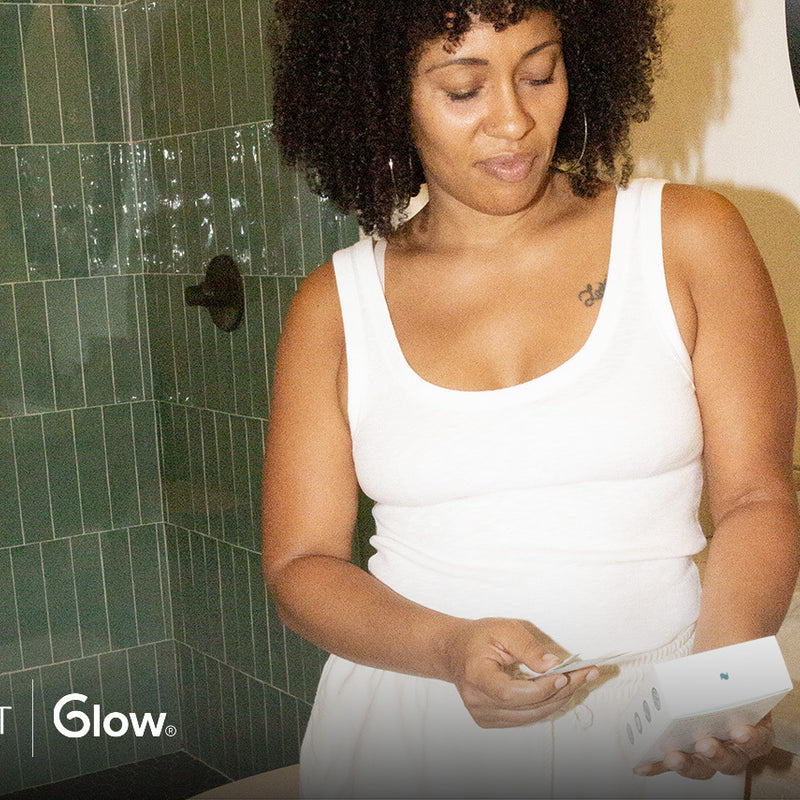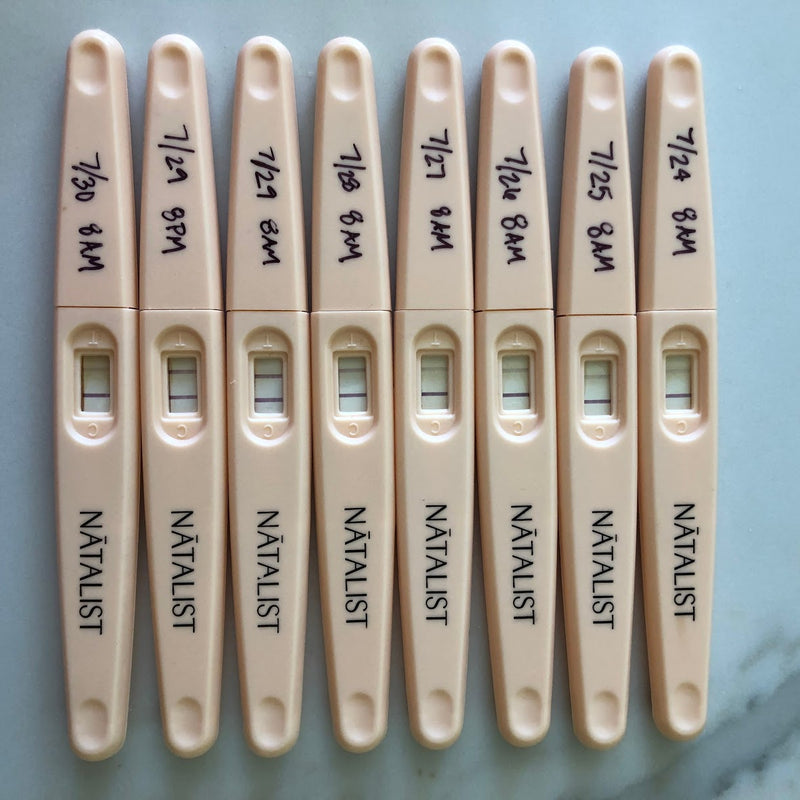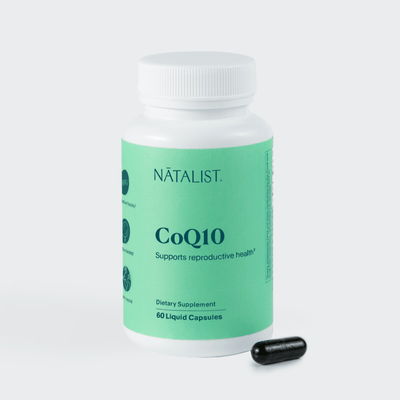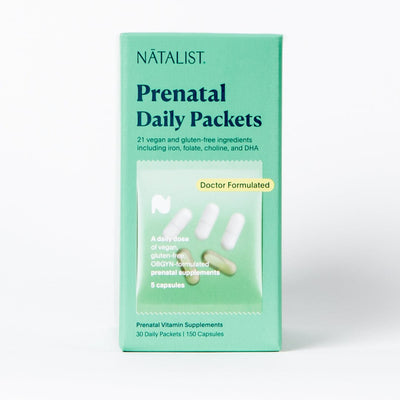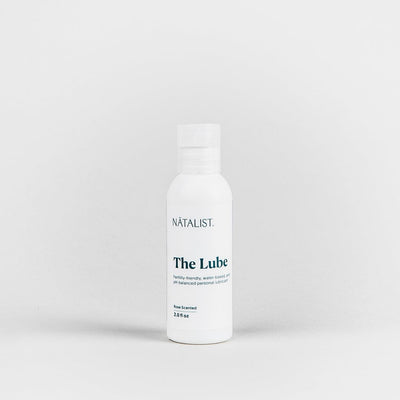Increased Libido During Ovulation Explained

If you track your ovulation carefully, you may also notice there’s a pattern with your sexual libido around this time as well. It’s not a random coincidence that your sex drive tends to be higher before and during ovulation—it’s simply nature giving you a subtle clue that your body is ready to conceive.
Here’s increased libido during ovulation explained.
Understanding the Ovulation Cycle
The average menstrual cycle lasts 28 days, but a normal menstrual cycle can last anywhere between 24 and 38 days.[1] The day your period starts is considered the first day of your menstrual cycle.[1]
On average, ovulation occurs between days 11 and 14 of your menstrual cycle.[2] Healthcare providers say that if you’re trying to conceive, aim to do so anytime between days 7 and 20.[2]
The Role of Hormones in Ovulation
Several hormones play a role in your ovulation. These hormones include [3,4,5,6,7,8]:
- Follicle-stimulating hormone (FSH). FSH is made by the pituitary gland and supports the growth and preparation of eggs for ovulation.
- Estrogen. Estrogen helps regulate your periods and thickens the lining of your uterus during ovulation to prepare it for pregnancy.
- Luteinizing hormone (LH). LH triggers the release of an egg from your ovary. Your LH levels start rising about 36 hours before ovulation and peak about 12 hours before ovulation.
- Progesterone. During ovulation, progesterone thickens the lining of your uterus to support the implantation of a fertilized egg.
- Gonadotropin-releasing hormone (GnRH). GnRH is produced by the hypothalamus and stimulates the production of all the hormones essential to ovulation.
Ovulation begins when GnRH is released by your hypothalamus.[9] GnRH causes your pituitary gland to release FSH and LH.[9]
During days six to 14 of your cycle, FSH causes the follicles in an ovary to mature.[9] On around day 14, your levels of LH drastically increase, and your ovary releases the egg.[9]
Next, your levels of progesterone rise to prepare the uterus for pregnancy.[9] Your egg travels through your fallopian tube, where it has the potential to be fertilized by sperm.[9] If your egg is fertilized, it travels to your uterus, where it becomes implanted, and you become pregnant.[9]
Identifying Your Fertile Window
The fertility window is different for all women and people assigned female at birth (AFAB). A good way to determine when you are fertile, or ovulating, is to evaluate your cervical fluid.
The appearance and consistency of your cervical fluid changes all throughout your menstrual cycle.[2] When you are fertile, cervical fluid may have the following characteristics [2]:
- Wet or slippery
- Creamy
- Stretchy
- White, or clear like egg whites
To find out whether it’s a good time to conceive based on your cervical fluid, use your fingers to feel its consistency or inspect your toilet paper after wiping.
Another great way to identify your fertile window is to use an Ovulation Test Kit, which can help you determine when your LH levels are high. This simple urine test comes with 30 strips so you can check your fertility often during one or more menstrual cycles.
The Link Between Libido and Ovulation
Many hormones that play a role in ovulation also play a role in your sexual desire. Therefore, it makes sense how the hormonal changes you experience during this time can affect your libido.
Hormonal Influence on Sexual Desire
Estrogen, progesterone, and testosterone are the main hormones that regulate sexual desire in women and people AFAB.[10] Some studies show that LH also has a significant impact on sexual libido.[11,12] Fluctuations in these hormones can affect your sex drive, such as that which may occur during ovulation, pregnancy, and menopause.[10]
Patterns of Libido Before and After Ovulation
It’s common for sexual libido to be higher than normal before you ovulate and to decrease slightly following ovulation.
In a study published in the Journal of Sex Research, researchers learned that sexual activity among women increased for a six-day period starting three days before their LH levels spiked—indicating that heightened libido does coincide with ovulation.[12]
In another study published in Hormones and Behavior, researchers found that sexual libido decreased when levels of progesterone were high.[13] Progesterone levels in the female body typically increase following ovulation.[13]
Scientific Insights into Libido During Ovulation
The link between sexual libido and ovulation has been studied by many researchers and institutions for decades. Here are some highlights.
Studies on Luteinizing Hormone and Sexual Desire
In addition to the aforementioned study in which higher LH levels coincided with higher libido, researchers who led another study published in Fertility and Sterility came to the same conclusion.[11,12]
In this particular study, a group of women tracked their sexual activity for at least 90 days.[11] After evaluating the results, researchers learned that peak sexual activity among these women took place on the day LH levels were at their highest.[11]
Estrogen Levels and Their Impact on Libido
Estrogen levels typically peak 24 hours before ovulation, according to research presented in the journal Hormones and Behavior.[10] The researchers who led the study confirmed that higher estrogen levels support a rise in sexual desire.[10]
In a more recent study in Psychoneuroendocrinology, researchers found that estrogen had only marginal effects on sexual desire and that it was unlikely it increased sexual desire around ovulation.[14] However, it may be worth noting that estrogen DOES help lubricate the vagina, which contributes to sexual desire and arousal.[15]
Beyond Hormones: Other Factors Affecting Libido
Aside from hormones, many other factors can also affect your libido, including your physical and psychological health.
Emotional and Psychological Influences
Regardless of where your health stands physically, certain emotional and psychological influences can diminish your libido. These influences include [16]:
- Stress
- Depression
- Anxiety
- Low self-esteem
- Relationship struggles
- History of sexual trauma
Physical Changes and Sexual Pleasure
Changes to your physical health can affect your sex drive, whether short-term or long-term. Physical changes that may affect your libido include [16]:
- Pregnancy
- Chronic conditions, such as diabetes, heart disease, and cancer
- Certain medications, including antidepressants and chemotherapy drugs
- Smoking
- Alcohol use
- Illicit drug use
- Too much or too little physical activity
- Menopause
- Infections
- Reproductive health conditions, including endometriosis and PCOS
Practical Implications for Conception
If your goal is to get pregnant naturally, you can practice several lifestyle behaviors to improve your chances of conceiving.
These behaviors include [17]:
- Not smoking
- Abstaining from alcohol
- Reducing your caffeine intake
- Exercising regularly
- Managing stress
- Eating healthy foods
- Taking prenatal vitamins, including folic acid
Having sexual intercourse before and during ovulation and paying attention to your libido are other effective ways to increase your odds of conceiving.
Timing Intercourse for Pregnancy
The best time to have intercourse if you want to get pregnant is between five days before ovulation and the day of ovulation.[17] Sperm lives an average of five days in your reproductive tract, and your egg stays in the fallopian tube for 12 to 24 hours after it is released.[17] As long as you have intercourse before or during that time, sperm can potentially fertilize your egg.[17]
Understanding and Utilizing Libido Signals
Everyone experiences sexual desire in their own way. When it comes to conceiving, you can pay close attention to signs that indicate your libido is high and initiate intercourse with your consenting partner when the timing is right.
Signs of high sexual libido in females and people AFAB include[18]:
- Faster breathing and heart rate
- Flushed skin
- Increased muscle tension
- Hardened or erect nipples
- Clitoral swelling
- Fuller breasts
- Sensation of wetness in the vagina
Addressing Variations and Concerns
Not everyone’s body functions like clockwork, in which case it may be challenging to rely on libido and the ovulation cycle alone when trying to conceive. If you think discrepancies in your menstrual cycle or libido are causing problems, talk to your healthcare provider.
When Libido Doesn't Align with Ovulation
If your libido isn’t matching up with ovulation, take a moment to assess whether influences such as stress or fatigue are interfering. Then, take steps to modify those behaviors or consult with your healthcare provider. Keep in mind that it is still possible to get pregnant if you have intercourse within your fertility window, even if your libido isn’t at its highest.
Seeking Help for Libido and Fertility Issues
Make an appointment with your healthcare provider if you need help addressing low sexual libido and fertility issues. Your provider can talk to you in greater detail about your symptoms and concerns and help you identify the root causes preventing you from enjoying your sex life and/or conceiving.
Natalist: Supporting You Throughout Your Fertility Journey
At Natalist, we are devoted to helping you improve your reproductive health journey and offer an array of vitamins, supplements, and other self-care products that can support you along the way. If you are making plans to conceive, check out our line of Planning products, including The Get Pregnant Bundle, which takes the stress out of trying to make a baby!
Dr. Kenosha Gleaton is board-certified in gynecology and obstetrics and is the Medical Advisor of Natalist. She received her MD from MUSC and completed her residency at Carolinas Medical Center in Charlotte, NC.
Dr. Gleaton is passionate about women, youth, and mentoring. She is a Scrubs Camp instructor, a program to increase student entry in healthcare, and serves as a Compassion International adoptive parent. She is also a member of the American College of Obstetrics & Gynecology, the American Association of Gynecologic Laparoscopists, and the American Association of Professional Women.
References:
- Your menstrual cycle. Office on Women’s Health. February 2021. https://www.womenshealth.gov/menstrual-cycle/your-menstrual-cycle
- Pregnancy - identifying fertile days. National Institutes of Health. January 2022. https://medlineplus.gov/ency/article/007015.htm
- Holesh JE, Bass AN, Lord M. Physiology, ovulation. National Institutes of Health. May 2023. https://www.ncbi.nlm.nih.gov/books/NBK441996/
- Follicle-stimulating hormone (FSH). Cleveland Clinic. January 2023. https://my.clevelandclinic.org/health/articles/24638-follicle-stimulating-hormone-fsh
- Estrogen. Cleveland Clinic. February 2022. https://my.clevelandclinic.org/health/body/22353-estrogen
- Luteinizing hormone (LH) levels test. National Institutes of Health. December 2023. https://medlineplus.gov/lab-tests/luteinizing-hormone-lh-levels-test/
- Progesterone. Cleveland Clinic. December 2022. https://my.clevelandclinic.org/health/body/24562-progesterone
- Gonadotropin-releasing hormone (GnRH). Cleveland Clinic. March 2022. https://my.clevelandclinic.org/health/body/22525-gonadotropin-releasing-hormone
- Ovulation. Cleveland Clinic. July 2022. https://my.clevelandclinic.org/health/articles/23439-ovulation
- Cappelletti M, Wallen K. Increasing women’s sexual desire: The comparative effectiveness of estrogens and androgens. Hormones and Behavior. 2016;78:178-193. https://doi.org/10.1016/j.yhbeh.2015.11.003
- Hedricks C, Piccinino LJ, Richard Udry J, Chimbira THK. Peak coital rate coincides with onset of luteinizing hormone surge. Fertility and Sterility. 1987;48(2):234-238. https://doi.org/10.1016/s0015-0282(16)59348-0
- Bullivant SB, Sellergren SA, Stern K, et al. Women’s sexual experience during the menstrual cycle: Identification of the sexual phase by noninvasive measurement of luteinizing hormone. Journal of Sex Research. 2004;41(1):82-93. https://doi.org/10.1080/00224490409552216
- Roney JR, Simmons ZL. Hormonal predictors of sexual motivation in natural menstrual cycles. Hormones and Behavior. 2013;63(4):636-645. https://doi.org/10.1016/j.yhbeh.2013.02.013
- Auer M, Joue G, Biedermann SV, Sommer T, Johannes Fuß. The effect of short-term increase of estradiol levels on sexual desire and orgasm frequency in women and men: A double-blind, randomized, placebo-controlled trial. Psychoneuroendocrinology. 2024;160:106682-106682. https://doi.org/10.1016/j.psyneuen.2023.106682
- Experiencing Vaginal Dryness? Here’s What You Need to Know. www.acog.org. https://www.acog.org/womens-health/experts-and-stories/the-latest/experiencing-vaginal-dryness-heres-what-you-need-to-know
- Low Libido (Low Sex Drive): Causes, Symptoms & Treatment. Cleveland Clinic. Published January 26, 2023. https://my.clevelandclinic.org/health/diseases/15216-low-libido-low-sex-drive
- How to get pregnant. Mayo Clinic. Published 2016. https://www.mayoclinic.org/healthy-lifestyle/getting-pregnant/in-depth/how-to-get-pregnant/art-20047611
- Cleveland Clinic. Sexual Response Cycle | Cleveland Clinic. Cleveland Clinic. Published 2017. https://my.clevelandclinic.org/health/articles/9119-sexual-response-cycle




